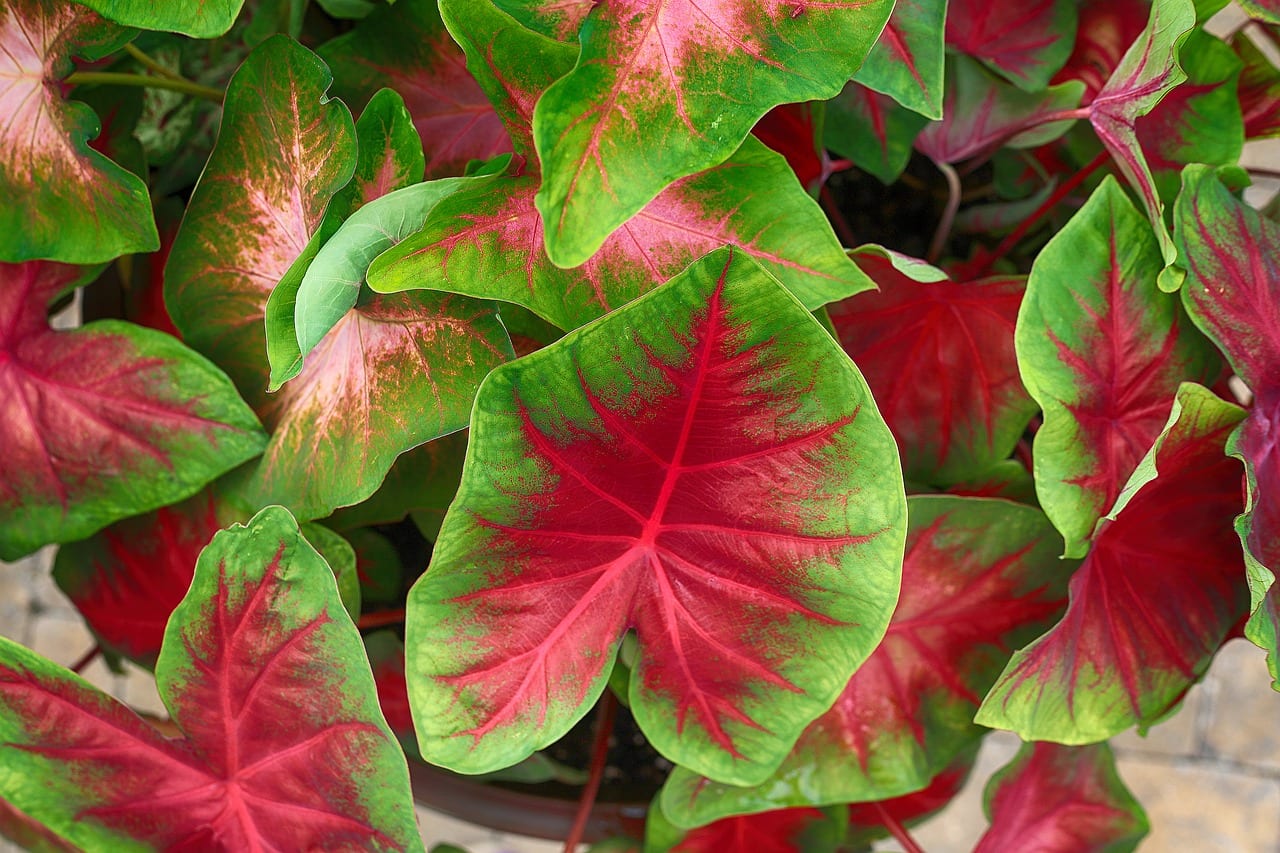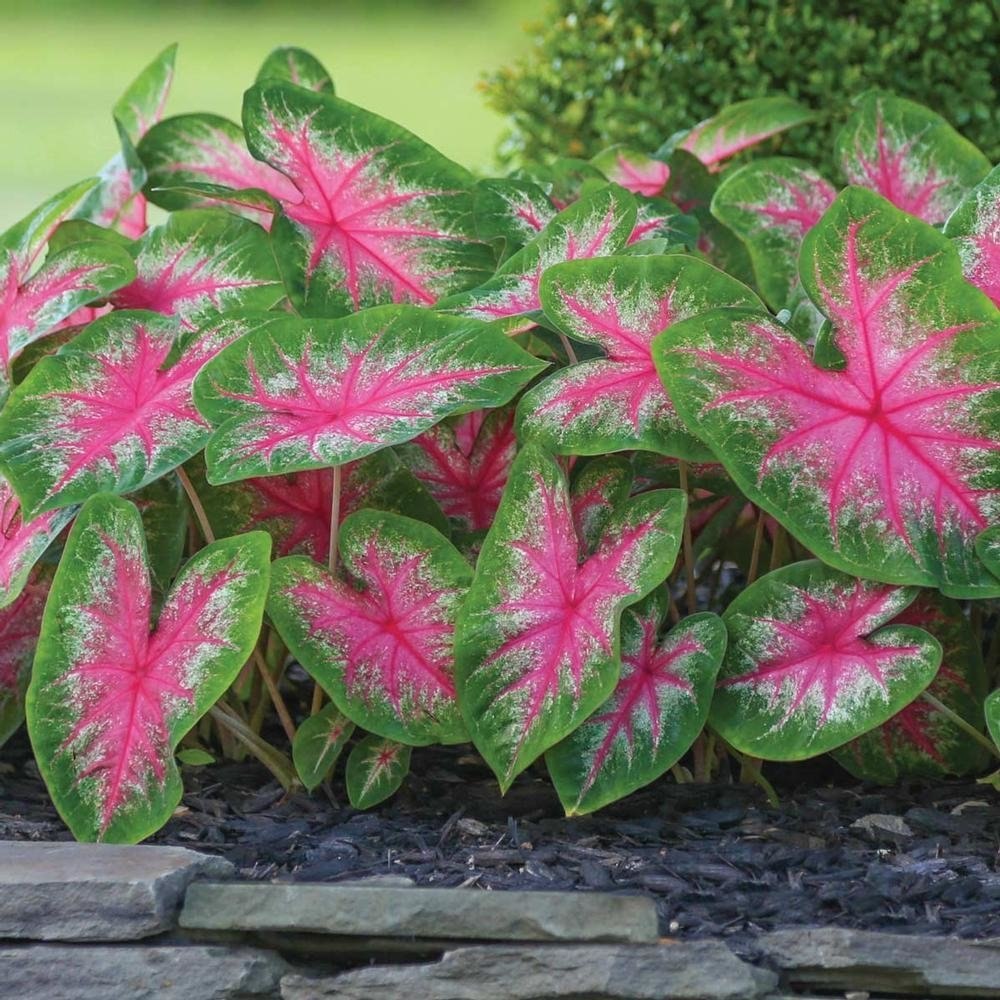The Heart of Jesus Plant is a beautiful species that is worth having inside our homes, its peculiar leaves make it a center of attraction. Although it must be taken into account that despite its beauty and name it is a toxic plant. Here we will show you its characteristics and give some tips for its maintenance. Go ahead and discover everything about this specimen!

Heart of Jesus Plant
The Corazón de Jesús plant, scientifically known by the name Caladium bicolor, attracts the attention of many due to the peculiarity of its leaf in two well-differentiated shades. This wonderful plant requires certain care and maintenance because it is not as resistant as it appears to be. It should also be taken into account that it is a toxic species and caution should be taken when there are children or pets at home.
From
The origins of this species can be centered in South America, more specifically in Brazil and Guiana, so it develops well in tropical environments.
Features
The Heart of Jesus Plant, caladium or painter's palette, is the most popular of the Caladium bicolor species, as it has unique characteristics that make it unique. Its leaves, even when they are simple, can measure up to 45 centimeters, with a cordate shape, that is, it resembles a heart, hastate, with a peltate blade, and shades on its face combined with a green margin and a pink center and can even become red. , in some cases it may present white splash. It is a perennial type plant, which can grow up to 50 cm in height. It is born from a rhizome and has a long petiole.
Care
Despite being a plant that reaches a large size in its leaves and has those two shades that make it so special, it is a species that requires a lot of care, as it is considered fragile and delicate. Now we present the basic care that this Heart of Jesus Plant should have.
Location and Rusticity
The Corazón de Jesús plant requires a location that allows it to receive sunlight but not directly, as its delicate leaves could burn. As for the ambient temperature, it is advisable that it be warm, that is, that it be on average between 18° and 21°. It does not adapt well to sudden changes in temperature, it thrives best in stable climates both day and night. It is also intolerant to air currents, so a strategic location with good ventilation is recommended, but not exposed to strong winds.
Irrigation
This species of Heart of Jesus Plant requires a very moist substrate, this does not mean that it should be irrigated with abundant amounts of water or directly, since its stems rot very easily and at the same time avoid wetting the leaves. To ensure that the plant remains moist but not flooded, it is advisable to place a plate with water as the base of the pot and in this way the substrate will be able to absorb water indirectly, hence it does not require such good drainage. If you want to know when is the ideal time for watering, insert a wooden rod if it comes out clean it is time for a good bath.
Earth
This plant can be located both indoors and outdoors, but certain aspects must be taken into account regarding the quality of the soil where it is planted, so if you are going to plant it in a pot, make sure that it has enough universal substrate and pearls, if possible in equal parts. In the case of planting it in the garden, the land must be fertile.
Subscriber
In order for the Corazón de Jesús Plant to develop properly, it is recommended that it receive a good fertilizer twice a month during its growth stage, which is when there is a greater demand for nutrients. In this case you can use universal fertilizer or guano in liquid form.
Pruning
When it is observed that the foliage begins to dry, it is advisable to prune the silver leaving it flush with the ground and at the same time stop watering it so that it enters a state of rest and thus can grow back stronger and more robust. To carry out this pruning you must use gardening scissors in good condition and sterilized, this will prevent the plant from contracting viruses, fungi or bacteria.
Multiplication
This species of plant is born from a bulb, so its multiplication must be done through the division of the tuber that is born around the adult tuber. This separation should be done during the spring. To do this, detach a part of the new tuber and place it in a container or pot with universal substrate, water it around the bulb and progressively increase the amount, place it in a place where there is light, but not direct light with an adequate room temperature that oscillate between 20° and 27°.
Planting or Transplanting Time
To transplant the Heart of Jesus, you must wait for spring or dry weather. If you notice that the roots of the plant begin to come out of the pot, it is time to make a change to a larger one or simply that it has already been in that pot for a long time, which makes it the ideal time for transplanting.
Plagues and diseases
The Heart of Jesus Plant is very sensitive to contracting diseases such as fungus, as it requires a lot of moisture, which is very beneficial for these to develop and cause the root, stem and leaves to rot. For this reason, spraying the leaves should be avoided so as not to create an environment conducive to mold, which appears as a whitish stain that grows and ends up destroying the entire leaf. If the environment is very dry, place containers with water around the plant, this will serve as a natural humidifier.
Treatment: In case of being attacked by some type of fungus, the ideal is to treat them with a systemic fungicide. It is also advisable that at the end of winter, due to the level of humidity, a preventive treatment with broad-spectrum insecticide is carried out, thus avoiding the proliferation of aphids and cochineals.
What uses does the Heart of Jesus plant have?
The Heart of Jesus Plant has the primary use of being an ornamental piece of the place where it is located, either indoors or outdoors, since its striking and large two-tone leaf attracts attention. The leaves are used for flower arrangements, for which they must be placed in water for about 24 hours prior to decoration and can last up to 15 days. It has no properties of any kind, if it were to be consumed for any reason, it could cause inflammation of the respiratory tract shortly after consumption.
To learn more about the Heart of Jesus Plant, you can watch the following video
If you want to know more about plants, follow these links, I know you will love them.



The flower of this plant is family of the calla?
Hello Rita.
Yes, both plants are classified in the same family: Araceae.
A greeting.